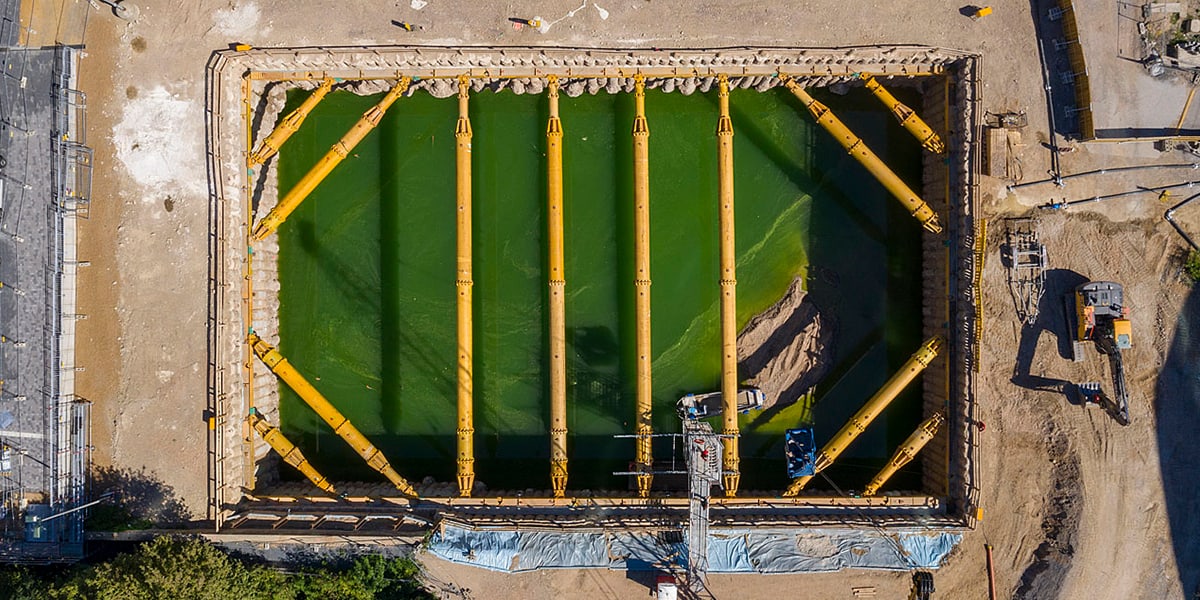
Start of high-building on Düsseldorf's iconic project
Düsseldorf, 10th December 2020. After ten months of work, the civil engineering work on Düsseldorf's first timber hybrid office building, The Cradle, can be completed on time. There is a seamless transition to the construction of the building: from now on, the team in charge will be the one responsible for the structural work at Speditionstrasse in Düsseldorf's MedienHafen. The Cradle is being developed by INTERBODEN and is already considered a iconic project for sustainable real estate development even before its completion. The building has already been awarded for its architecture several times, including the prestigious Architectural Review Future Project Award at MIPIM 2018 and, most recently, the BIM Special Award at the Heinze Architects' Awards 2020. The architecture was designed by HPP Architects from Düsseldorf.
The civil engineering work on The Cradle has been successfully completed. Due to the soil conditions and the enormous water pressure due to its proximity to the Rhine, it was an extraordinary challenge. The twelve-meter-deep excavation pit must withstand enormous pressure and therefore be secured much more strongly than usual. The excavation pit holds a total of around 17 million litres, which is roughly equivalent to seven Olympic swimming pools. The complex work took around ten months to complete. "Despite the demanding task and the additional difficulties caused by the coronavirus, civil engineering work was completed without delay and according to plan," says Carsten Boell, Managing Director of INTERBODEN Innovative Gewerbewelten. "With Züblin Spezialtiefbau, we had a strong partner and absolute specialist on site."
The completion of the civil engineering work also marks the handover of the site to the construction company Oevermann, which will now begin the structural work. This is no less demanding: The Cradle is being developed according to the Cradle-to-Cradle© principle. In addition to a careful selection of the materials to be used - no toxic substances in accordance with the Banned List of Chemicals and traceability of materials and raw materials in the sense of a circular economy - this also means taking new approaches to construction work. This includes, for example, the use of materials on the construction site and in the building, as well as the material connections, which require special attention due to their subsequent separability. "We plan the building as a sustainable raw material warehouse, whose materials can be reused to a large extent after use. This is resource-saving and value-preserving," explains Boell. "We are proud that it is now moving into the structural work phase and that everything we have been working towards for so long is now taking shape and becoming a reality."